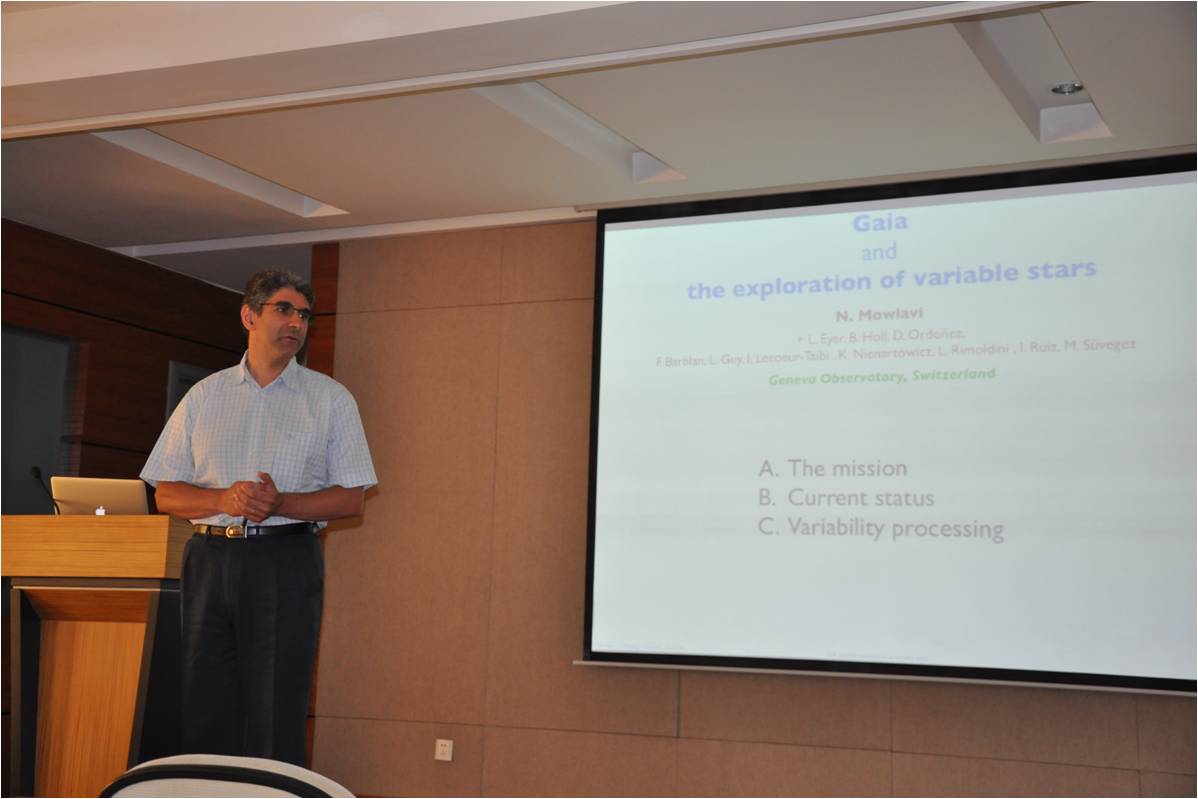A member of the GAIA consortium, based at the Geneva Observatory, visited NAOC and gave a report about the status of the GAIA mission on 18 June 2014. Prof. Nami Mowlavi presented us “update about GAIA”.
The main goal of the GAIA mission is to compile the most accurate catalog of stellar positions ever produced. In addition, GAIA will also generate spectral data that correspond to stars that are observed in this catalog, which can help astronomers measure many stellar properties.
The speaker first showed how the GAIA project is organized. Because GAIA will observe billions of targets and generate enormous amounts of data, a large consortium of research institutes must cooperate in order to manage data generated by the mission. The speaker showed a map of member institutes that are spread across many countries in Europe.
GAIA was launched in December, 2013 and the speaker described how GAIA is currently undergoing calibration tests. He showed how GAIA will continuously scan the sky as it rotates and he demonstrated how it will make repeated measurements of the same targets. Over time, GAIA will observe the entire sky, averaging 70 repeated measurements of a given location, and because it also accurately records the brightness of objects, such a database will be useful in many fields of astronomy. For example, repeated observations of the brightnesses will help identify various types of variable stars and even identify transits of exoplanets. In addition, the speaker remarked that GAIA will also collect information about objects in our solar system that change position over time, for example asteroids.
Although GAIA is currently in its commissioning phase, Prof. Nami Mowlavi noted that it should begin its normal operation in September of this year, and the first release of data is scheduled for 2016. GAIA is currently slated for 5 years of operation, with the release of the final catalog around 2022.















